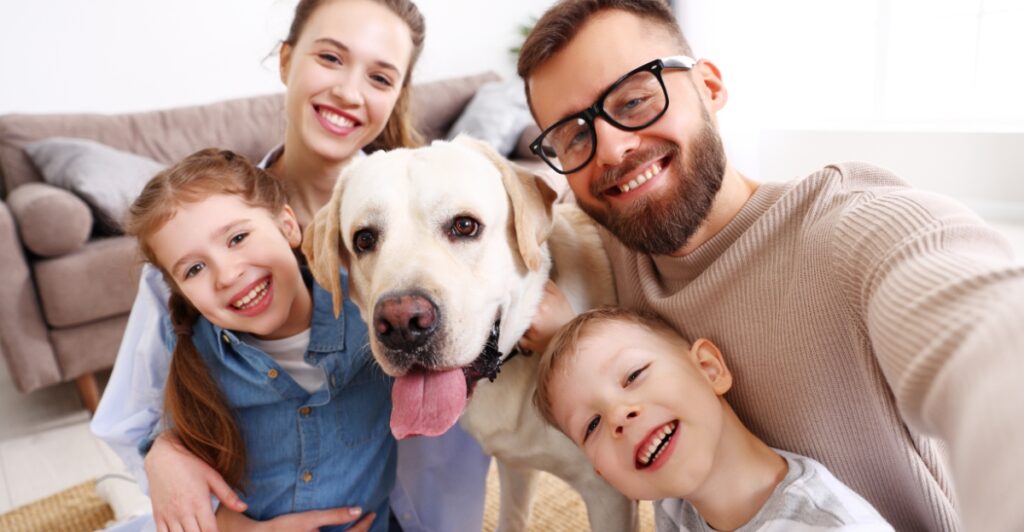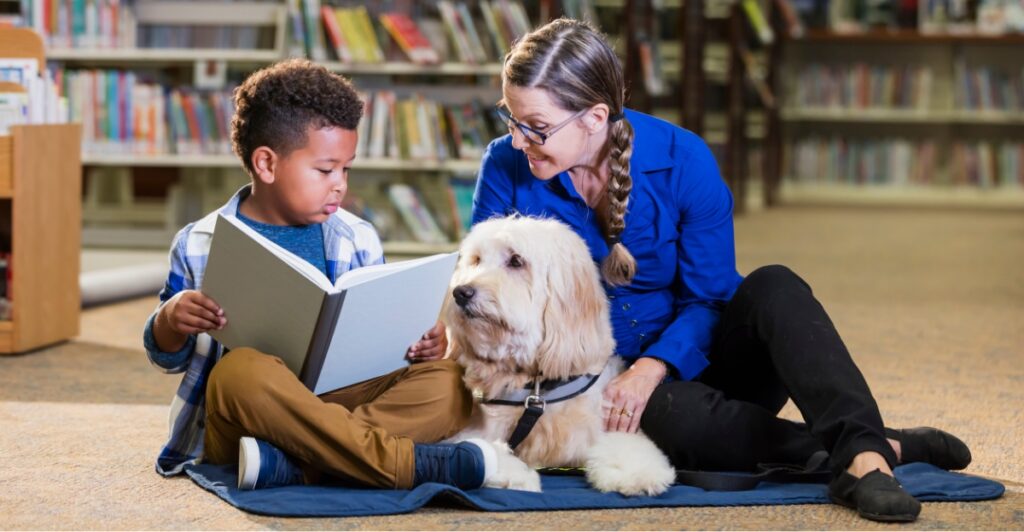
For thousands of years, dogs have adapted alongside humans, reflecting shifts in our needs and lifestyles. Today, researchers believe dogs may be undergoing a new evolutionary phase characterized by sociability and adaptability. This phase aligns with the demands of modern urban environments, where dogs function less as workers and more as companions. These changes suggest a future where dogs are better suited to life in close quarters, thriving as calm, friendly, and easy-going family members who fit seamlessly into human routines.
The Origins of Dog Domestication

Around 14,000 to 40,000 years ago, wolves began scavenging near human camps. Those with reduced fear and aggression gained an advantage, evolving into the ancestors of modern dogs. This initial domestication wasn’t just behavioral—physical traits like floppy ears and varied coats also emerged over time. These early changes reflect how dogs first adapted to human environments, setting the stage for a bond between species. The shift from predator to ally marked the beginning of a partnership that would transform both wolves and humans.
How Breeding Shaped Modern Dogs

The Industrial Revolution saw the development of distinct dog breeds, with breeding focused on appearance and specific traits. Many breeds were created for specific tasks or jobs, while others became status symbols for wealthy households. This emphasis on physical characteristics often overlooked the psychological needs of dogs, particularly as urbanization increased. Today’s shift in domestication emphasizes temperament and adaptability over looks, reflecting a modern preference for pets who do well in confined spaces and busy places.
From Workers to Family Members

Historically, dogs were bred and valued for their ability to perform tasks like guarding, herding, or hunting. Over time, their roles have shifted dramatically. In many households, dogs are now cherished as family members, spending most of their time indoors. This new role demands different qualities, such as a calm demeanor and sociability, rather than the energy and drive required for traditional working roles. As society continues to change, dogs are evolving to better suit the environments and relationships of today.
Service Dogs Reflect a New Ideal

Service dogs exemplify traits that many pet owners now desire in their companions. They are calm, adaptable, and reliable under stress—qualities that make them ideal for navigating the modern world. Unlike traditional working dogs, their primary function is to support their human partners emotionally and physically. These dogs exhibit high levels of social bonding and mutual trust, making them a potential blueprint for the broader pet population as selective breeding increasingly prioritizes friendliness and ease of integration.
The Science of Sociable Dogs

Studies have revealed fascinating biological differences in service dogs compared to the average pet. Research from Sweden’s Linköping University shows that service dogs possess higher levels of oxytocin, the hormone linked to trust and social bonding. This may help explain their emotional temperament and adaptability. These biological traits are not only beneficial for service work but could also influence the future of dog breeding. A focus on enhancing sociability and emotional intelligence may lead to pets that are even better suited to urban and family life.
What Foxes Teach Us About Evolution

Experiments conducted with foxes in Russia during the 1950s demonstrated how breeding for temperament can result in rapid change. Over just a few generations, foxes selected for friendliness began to exhibit new physical traits, such as floppy ears and spotted coats. This research shows just how quickly animals can evolve under target selection. The findings suggest that breeding dogs for sociable temperaments could produce significant behavioral and physical changes within a relatively short time, aligning with the demands of modern living.
Why Some Dogs Struggle in Cities

Not all dogs are well-suited to urban environments. Breeds with strong guarding instincts or high energy levels may find life in small apartments or crowded neighborhoods challenging. Behaviors like excessive barking at strangers or territorial aggression—once valued—can become problematic. These mismatches can lead to stress for both dogs and owners, sometimes resulting in abandonment. Recognizing these challenges has prompted a greater focus on breeding and training dogs that are more adaptable to the realities of city life.
Training Practices to Help Urban Dogs

Service-dog training offers valuable lessons for pet owners looking to help their dogs adjust. Techniques like early socialization, crate training, and positive reinforcement build confidence and encourage calm behavior. While these methods require dedication, they can transform even high-energy dogs into more adaptable companions. Owners who commit to consistent training often find that their dogs become better suited to the challenges of apartment living and social interactions in busy urban settings.
The Appeal of Adopting Adult Dogs

For people living in cities, adopting an adult dog with an established temperament can be a practical alternative to raising a puppy. Adult dogs are often calmer and require less intensive training, making them a good match for busy owners. Shelters frequently have dogs whose energy levels and personalities are already known, allowing potential adopters to find a companion suited to their lifestyle. This approach ensures a smoother transition and increases the likelihood of a successful long-term bond.
Dogs as a Source of Comfort

In the hustle of city life, dogs provide a much-needed source of emotional support. Their ability to bond closely with humans offers companionship and stress relief. Urban environments demand calm, well-behaved pets who can navigate shared spaces like parks and cafés with ease. As people seek pets that fit seamlessly into their lives, the growing focus on temperament and adaptability ensures that dogs continue to play a valuable role in alleviating the pressures of daily life.
How Dogs Strengthen Human Bonds

Dogs have always played a role in shaping human relationships, and their evolution reflects changes in our society. As they become more sociable and adaptable, dogs not only provide companionship but also help foster connections between people. Whether at home, in parks, or during social outings, dogs encourage interactions and build a sense of community. Their role as emotional anchors enhances the bond between humans and animals, creating deeper connections than ever before.
Selective Breeding and the Future Pet

Selective breeding has long been a tool for shaping dog behavior and appearance. Now, it’s being used to emphasize qualities like sociability and emotional intelligence. This shift could lead to a new generation of dogs that are universally friendlier. As more breeders focus on these traits, the result may be canine companions who are better equipped to thrive in diverse environments, from busy family homes to urban apartments. This evolution marks a significant step in the partnership between humans and dogs.
From Guardians to Gentle Companions

Throughout history, dogs’ evolution has mirrored the changing roles they play in our lives. Once relied upon for protection and labor, today’s dogs are increasingly bred for gentleness and companionship. This transition reflects a broader societal shift as pets become integral members of households. By focusing on traits that enhance their role as family companions, dogs are adapting to the demands of modern living, strengthening their bond with humans in new and meaningful ways.
The Role of Adaptability in Evolution

Adaptability has always been a key factor in the evolution of dogs. Today, this trait is more important than ever, as urban environments demand pets who can handle confined spaces, diverse social interactions, and unfamiliar surroundings. Breeding for adaptability ensures that dogs continue to thrive in changing circumstances, reinforcing their place by our side wherever we go. This evolution demonstrates how dogs respond to human needs while still maintaining their unique characteristics and charm.
Matching Traits to Lifestyles

As dogs evolve, it becomes ever more important to match their traits to the needs of their owners. High-energy or strong-willed dogs may struggle in quiet households, while calm, sociable breeds live their best life. Ensuring a good fit reduces stress for both the animal and the owner, leading to healthier, happier relationships. This challenge emphasizes the importance of responsible breeding and adoption practices, as well as proper training and care, to foster lasting connections between dogs and humans.
The Rising Demand for Social Pets

Pet owners today prioritize dogs who are easy-going and sociable, able to interact comfortably with people and other animals. This shift in preferences has influenced breeding trends, creating a market for pets who excel in companionship rather than traditional work roles. Friendly dogs are now seen as essential partners in most modern households, reflecting the evolving nature of the human-canine bond and a promising future for dogs as cherished companions.
Dogs Supporting Wellness

Beyond companionship, dogs also play a growing role in enhancing community well-being. Programs that bring therapy dogs to schools, hospitals, and workplaces are increasing, addressing mental health challenges and fostering emotional support in shared spaces. Their calming presence helps reduce anxiety, creating more inclusive and caring environments. With these initiatives, dogs’ roles expand beyond the home to positively influence broader societal dynamics, offering comfort and connection in a fast-paced world.
How Dogs Shape Urban Spaces

As dogs evolve to fit modern lifestyles, they are also influencing how urban environments are designed. Pet-friendly parks, cafés, and housing developments are becoming the norm, reflecting the deep integration of dogs into city life. This shift encourages more thoughtful urban planning that accommodates the needs of both humans and animals. Dogs are not just adapting to our spaces; we are adapting our spaces to them, creating communities that foster better interactions and harmonious living between people and their pets.
The New Era of Evolution

The ongoing evolution of dogs represents a profound shift in their relationship with humans. As selective breeding continues to prioritize sociability and adaptability, dogs are transforming into companions uniquely suited to our modern lifestyles. This new phase illustrates the enduring bond between the species, encouraging partnerships that enhance both human and canine lives. The future promises a closer, more harmonious coexistence as dogs continue to adapt and thrive alongside their human counterparts.
Resources:
- The Atlantic: Dogs Are Entering a New Wave of Domestication
- Linköping University: Dogs’ social skills linked to oxytocin sensitivity
Stay connected with us for more stories like this! Follow us to get the latest updates or hit the Follow button at the top of this article, and let us know what you think by leaving your feedback below. We’d love to hear from you!







